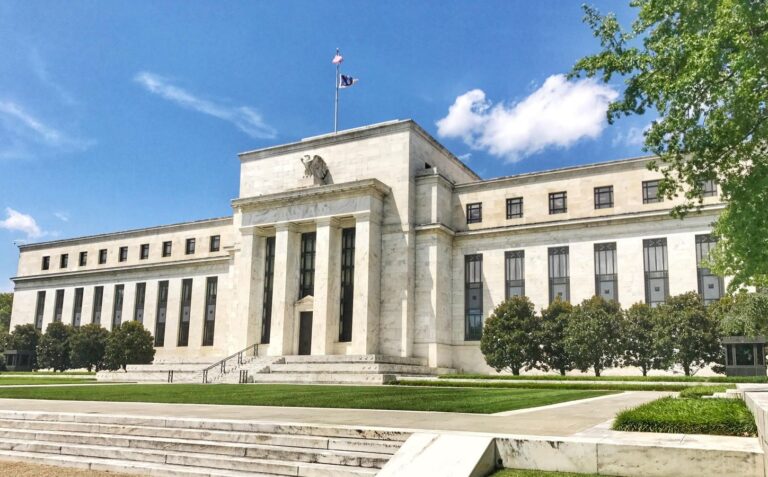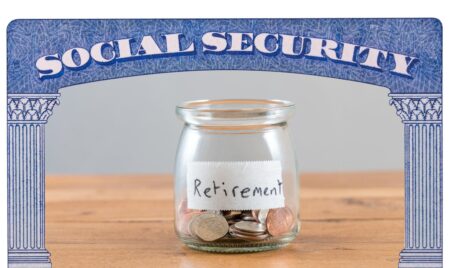America’s retirement system is failing, reveals the new Fed Survey of Consumer Finances. True, retirement account balances are up from 2018, but despite the increase, Americans are far behind where they need to be for a secure retirement.
Americans ages 55 to 64 have a median before-tax income of $82,000 and $185,000 in their retirement accounts, which is 2.3 times their income. Aon Consulting Group calculated in a 2018 survey that people nearing retirement need eight times their annual income in their accounts. By age 67 that rises to 11.1 times in order to maintain living standards in retirement. This means the median American household needs at least $470,000 more in their retirement account.
Saving Consistently Boosts Retirement Income Security But Only Privileged Americans Can Do It
On paper, the solution to retirement shortfalls is easy-peasy: Go back in time and save 5% of your paycheck starting in your 20s. Work steadily for 40 years, never stop contributing, don’t get a divorce, and don’t get laid off. Start early, never withdraw, and never take out loans against your retirement accounts.
If you begin saving at about age 40, you need to save more than 26% of your gross income each year until age 67 to achieve an 80% replacement rate in retirement. That’s a much steeper climb. If workers lose all of their retirement savings and have to start fresh at age 50, they need to contribute half of their earnings toward retirement for the rest of their working days.
Under the current system, saving for retirement is nearly impossible. As a policy note I co-authored for The New School’s Schwartz Center for Economic Analysis explains, it is no surprise that we are facing a humanitarian and political disaster. Many middle class people will be downwardly mobile into poverty in old age.
This means that 40 years after the 401(k) plan came on the scene — ushering in an era of voluntary, financialized, and individual-driven retirement — the American system is failing. The Mercer CFA Institute Global Pension Index Mercer/Melbourne international survey puts the U.S. near the bottom of all rich nations in the Organisation for Economic Co-operation and Development. The Netherlands, Australia, and Finland all received A’s while the U.S. earned a mere C-plus.
Retirement Account Participation Improved From 2018 To 2022: From Real Bad To Bad
The new Fed survey shows the share of households with retirement accounts increased from 51% to 54% between 2019 and 2022 — an all-time high for the survey (which dates back to 1989). This means that 46% of families no retirement account. They are on a grim path toward depending solely on Social Security. And mere participation in a plan — having something — does not mean having enough. For households of all ages, the median value in retirement accounts rose from $75,000 in 2019 to $87,000 in 2022.
Troublingly, the American retirement system still leaves out Black retirees. The median value of their accounts fell (the only group that declined) to $39,000, or only 39% of the median value for white retirees ($100,000). Black people’s participation in retirement plans also fell to 34.8%. Though median holdings increased for Hispanic Americans, their participation rose only modestly and remains less than half that of white people. When considering participation by level of income, only 13.4% of the bottom 20% of people participate in retirement savings; among the next lowest 20%, participation is still only 35.4%.
The upshot of the voluntary retirement system is spotty participation and tax breaks that mainly benefit those at the top. Seventy-seven percent of the more than $279 billion in retirement tax breaks, according to an Economic Innovation Group report, go to the wealthiest 20% of Americans.
What is the main indicator that the American retirement system is failing? The elder poverty rate is 23% — far higher than our peers and way above Canada’s 12.3% and the OECD average of 13%. The U.S. is among the few rich nations without a mandatory and universal system providing a flow of consistent retirement savings. We do not have appropriately safe and secure retirement account institutions in place that allow Americans to save enough to achieve adequate retirement income.
If passed, a promising new proposal – the Retirement Savings for Americans Act – would raise America’s grade. The RSSA has a fighting chance since both Republicans and Democrats support the plan to boost retirement security by providing universal pension coverage for low- and moderate-income workers. A bipartisan team — Senators John Hickenlooper (D-Colo) and Thom Tillis (R-N.C.), and Representatives Lloyd Smucker (R-Pa) and Terri Sewell (D-Ala) — are leading the way toward a better system.
The RSAA would provide workers who lack access to employer-sponsored retirement plans with access to portable options modeled after the Thrift Savings Plan, the one federal employees have.
The legislation builds on recommendations of a 2021 white paper I wrote with Kevin Hassett, the former Council of Economic Advisers chair under President Donald Trump. The plan would put eligible full-time, part-time, and gig workers who don’t have an employer-sponsored retirement plan — that includes most workers in the bottom 80% of the income distribution — in an account to contribute 3% of income (they can opt out). Most would get a matching contribution of up to 5% through a refundable federal tax credit, making it attractive to participate in the plan and making a fairer distribution of federal subsidies for retirement.
The RSAA accounts are portable and the investment options are sensible — much like the plan federal employees benefit from now.
The vast majority of households — whether Republican, Democrat, or independent —are worrying about retirement. And increasingly, so are elected officials. In 2023, the U.S. Conference of Mayors adopted a bipartisan resolution calling on federal policymakers to help private-sector workers without a retirement plan — knowing their cities will face more and more poor elders if nothing is done.
America can do better for its workers and elders by boldly reforming the current retirement system, a system that serves the wealthiest of Americans best.
Read the full article here









